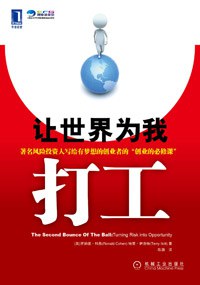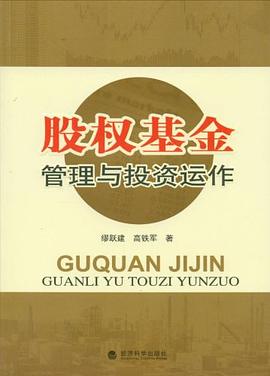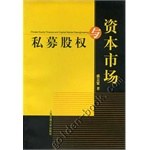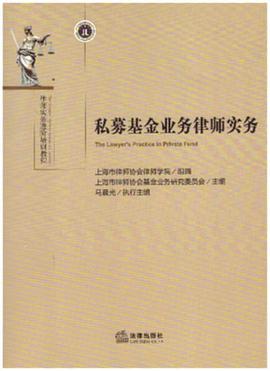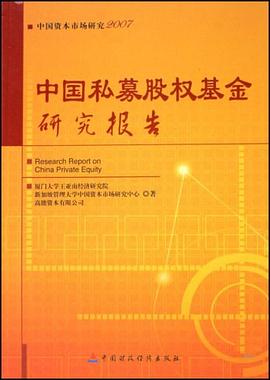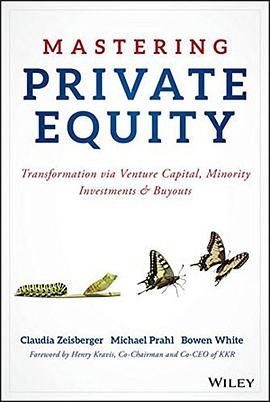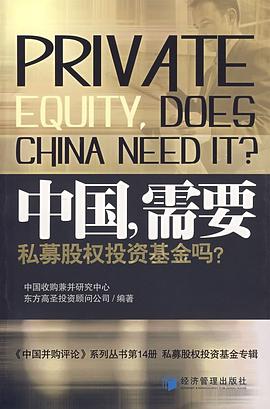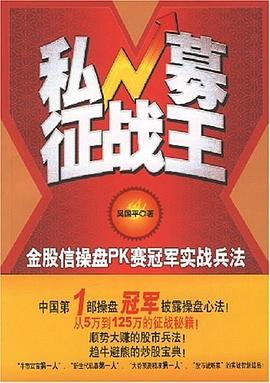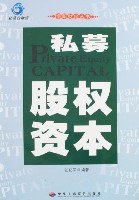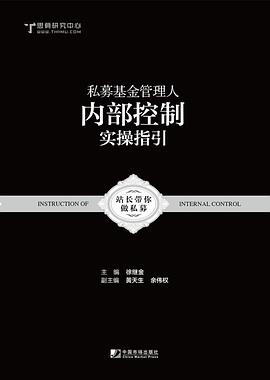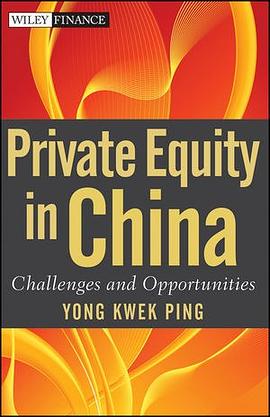

具體描述
Learn valuable lessons from the newly successful private equity players in China and explore the challenges and opportunities offered in Chinese markets
The first book to deal with private equity finance in China, Private Equity in China: Challenges and Opportunities provides much-needed guidance on an investment concept that has so far proved elusive in Asia. Focusing on the opportunities that the Chinese finance market offers to private equity firms, the book shows how these firms can strategically position themselves in order to maximize success in this new marketplace.
Private Equity in China includes in-depth case studies illustrating both successful and failed ventures by private equity firms operating in China, outlining the challenges faced by private equity firms in setting up new funds. It contains a collection of valuable experience and insights about acquiring companies and turning them around essential for any firm currently operating in, or considering entering, the Chinese market.
•Discusses the challenges faced by private equity firms in China including setting up the initial fund, fund raising, deal sourcing, deal execution, and monitoring and exit strategies
•Provides key insights drawn from keen observations and knowledge of the more mature private equity market in Western countries, analyzing the way forward for the Chinese private equity industry
•Discusses the role of renminbi-denominated funds in the development of the private equity industry in China
Breaking new ground in exploring and explaining the private equity market in China, the book offers incredible new insight into how equity companies can thrive in the Chinese marketplace.
著者簡介
YONG KWEK PING has more than ten years of private equity investment experience in China. Kwek Ping started his first USD private equity China-focused growth fund in 2001 and has since made more than thirty investments in different cities in China across various industries, including manufacturing, mining, energy, food and beverage, and the retail sector. Kwek Ping has also planned and executed many successful exits through trade sales and pre-IPO transactions. Kwek Ping launched his first Chinese RMB private equity growth fund in 2010 with a total of USD and RMB fund size of more than US$3.0 billion under management. Kwek Ping's track record is well recognized, and he is frequently invited to speak at many international conferences and summits. Kwek Ping also teaches private equity courses at the Singapore Management University and is a Senior Fellow of the Wharton School, University of Pennsylvania, USA.
圖書目錄
Acknowledgments xvii
CHAPTER 1 Private Equity: An Introduction 1
Overview 1
Stages of Development of a Company 2
Differences between Private Equity and Venture Capital 5
Differences between Private Equity Investments and Corporate Mergers and Acquisitions 6
Inventis Private Equity Model 8
Structure of a Private Equity Fund 11
General Partners 11
Limited Partners 12
Investment Committee/Advisors 12
Professionals 12
Private Equity Investment Process 13
Planning, Fund-Raising, and Deal Sourcing 14
Due Diligence 16
Deal Structuring 18
Portfolio Management 21
Exit Strategies 24
CHAPTER 2 Overview of the Political, Macroeconomic, and Financial Landscape in China 33
Overview 33
Regulatory Environment 35
Chinese Government Agencies and Their Relevance to Private Equity 37
China’s Macroeconomic Conditions and Trends 45
Macroeconomic Condition 1: Inflation 48
Macroeconomic Condition 2: Widening Income Disparity 49
Macroeconomic Condition 3: Accelerated Aging Population Structure 50
Macroeconomic Trend 1: Increasing Urbanization 51
Macroeconomic Trend 2: Westward Shift in Industrialization and Development 53
Macroeconomic Trend 3: Strong Growth in Domestic Consumption 54
Macroeconomic Trend 4: Shift Toward Value-Added Industries 56
China’s Financial Markets 57
Key Phases of Developments in China’s Capital Markets 58
China’s Equity Markets 62
Foreign Listings on Chinese Exchanges 65
China’s Credit Market 67
Trust Financing 72
China’s Futures Markets: Commodity Exchanges and Derivatives Exchanges 73
Summary 75
CHAPTER 3 Private Equity in China 77
Overview 77
Key Market Trends and Developments 79
Private Minority Placement Quadrant 81
Private Majority Placement Quadrant 82
PIPE Minority Deals Quadrant 83
Private Equity Funds in China 97
Foreign-Owned Private Equity Funds (FOPE) 97
Chinese-Owned Private Equity Funds (COPE) 99
State-Owned Industrial Private Equity Funds (SOPE) 100
Hybrid Foreign/Chinese USD and RMB Private Equity Fund (HOPE) 101
Private Equity Investment Structures in China 102
Red Chip Structure or Round-Trip Investment 102
Onshore Structures 108
Leveraged Buyouts 112
Valuation Adjustment Mechanism 114
VAM in China’s Private Equity Industry 114
Financial Measures 116
Non-Financial Redemption Measures and Stock Offerings 117
Stock Offering: Expiration of VAM Agreement 119
Challenges of VAM 121
Exit Strategies for Private Equity Investment in China 121
Initial Public Offerings 122
Initial Public Offerings in Domestic Markets 125
Initial Public Offerings in Overseas Markets 129
Trade Sales 130
Secondary Sales 130
Leveraged Recapitalization/Distribution of Dividend 131
Benefits of Private Equity for China 132
The Case for Demutualization of Chinese Stock Exchanges through Private Equity Investments 136
CHAPTER 4 Renminbi Private Equity Fund 137
Overview 137
Setting Up and Fund-Raising in China 138
Investing in China 142
Exit Options for the RMB Fund 143
The Renminbi Private Equity Fund 144
Types of RMB Funds 145
Domestic Limited Partners 149
Private Equity Regulations and Incentives 159
RMB Funds’ Edge in Investing in China 160
Challenges and Opportunities for FOPE-RMB Funds 161
The Future of Domestic Limited Partners 162
Qualifi ed Foreign Limited Partnership Pilot Program 163
Management of Hybrid Funds 166
Onshore Legal Structures of RMB Funds 171
Restrictions for Foreign-Invested Partnerships (FIPs) 175
Treatment of FOPE-RMB Funds: Domestic or Foreign? 176
Exit Options for RMB Funds 177
Domestic Listings on Chinese Stock Exchanges 178
Private Equity Secondary Markets in China 179
China’s Domestic Limited Partners 180
Impacts of RMB Convertibility on RMB Private Equity Funds 181
RMB Private Equity Outbound Investments 182
CHAPTER 5 Investment Opportunities for Private Equity in China 187
Overview 187
Foreign Acquisition and National Security Review 189
China’s Five-Year Plan for National Economic and Social Development 191
China’s Seven Emerging Strategic Industries 195
Energy Saving and Environmental Protection 199
Renewable Energy 205
Alternative Energy Vehicles 210
Next Generation Information Technology 213
High-End Equipment Manufacturing 215
Biotechnology 217
New Materials 221
Investment Opportunities in China’s Energy Sector 224
Key Energy Security Concerns 224
Strategies to Tackle China’s Energy Challenges 227
Trends in the Oil and Gas Sector in China 230
Relationship between the Energy Firms and the Government 233
CHAPTER 6 Challenges and the Future of Private Equity in China 235
Overview 235
Fund-Raising 236
Deal Sourcing 238
Good Deals Are Getting Scarce, Valuations Becoming Too High 239
FOPE Funds Are Competing with COPE Funds in Deal Sourcing 239
Moving West 240
Consolidation Opportunities 240
Seeking Uniqueness from Other Funding Sources 241
Due Diligence 242
Reliability of Financial Statements 243
Intellectual Property Rights 245
Deal Structuring 247
Portfolio Management 250
Change from Boss Culture to Management Culture 251
Communication and Timely Information 251
Resistance to Change 252
Fighting for Control 253
Exit 255
Valuation Obstacles 256
China’s Private Equity Secondary Sales Market Is in the Nascent Stage 257
Foreign Exchange Controls and RMB Convertibility 258
Avoiding the Restriction or Seeking Local Government’s Aid 258
Gradual Loosening of Capital Inflows, Especially for Private Equity 259
Capital Outflows Are Strict, But Less Stringent than Inflows 259
The RMB Fund Advantage—Artificial and Temporary? 260
Media Reports and Public Perception 262
Guanxi Management 264
One Party to Gain Positive Career Prospects, the Other to Gain Justice Support 265
Private Equity Firms Do Not Invest in Green Fields, So No Need to Build Complicated Relationships 266
The Company Shareholders and Management Team Already Have Guanxi for Running the Business 266
Private Equity Firms Can Engage an External Consulting or Public Relations Firm 266
FOPE-RMB Funds 268
COPE-USD Funds 269
Leveraged Buyouts 270
Private Equity Professionals in China 271
Trend 1: From Foreign to Domestic Private Equity 273
Trend 2: From Investment Banks to Private Equity 274
Trend 3: From Traditional Industries to Private Equity 275
Trend 4: From Entrepreneurs to GPs and LPs 275
Conclusion 276
APPENDIX A Government Structure of the People’s Republic of China 281
APPENDIX B Key Points in a Private Placement Memorandum 287
APPENDIX C Geography of China 289
APPENDIX D Selected Private Equity Funds in Greater China 293
About the Author 299
Index 301
· · · · · · (收起)
讀後感
評分
評分
評分
評分
用戶評價
養分十足
评分The best book I've ever read about PE in China! I scanned some pages!
评分養分十足
评分The best book I've ever read about PE in China! I scanned some pages!
评分The best book I've ever read about PE in China! I scanned some pages!
相關圖書
本站所有內容均為互聯網搜索引擎提供的公開搜索信息,本站不存儲任何數據與內容,任何內容與數據均與本站無關,如有需要請聯繫相關搜索引擎包括但不限於百度,google,bing,sogou 等
© 2025 book.quotespace.org All Rights Reserved. 小美書屋 版权所有

